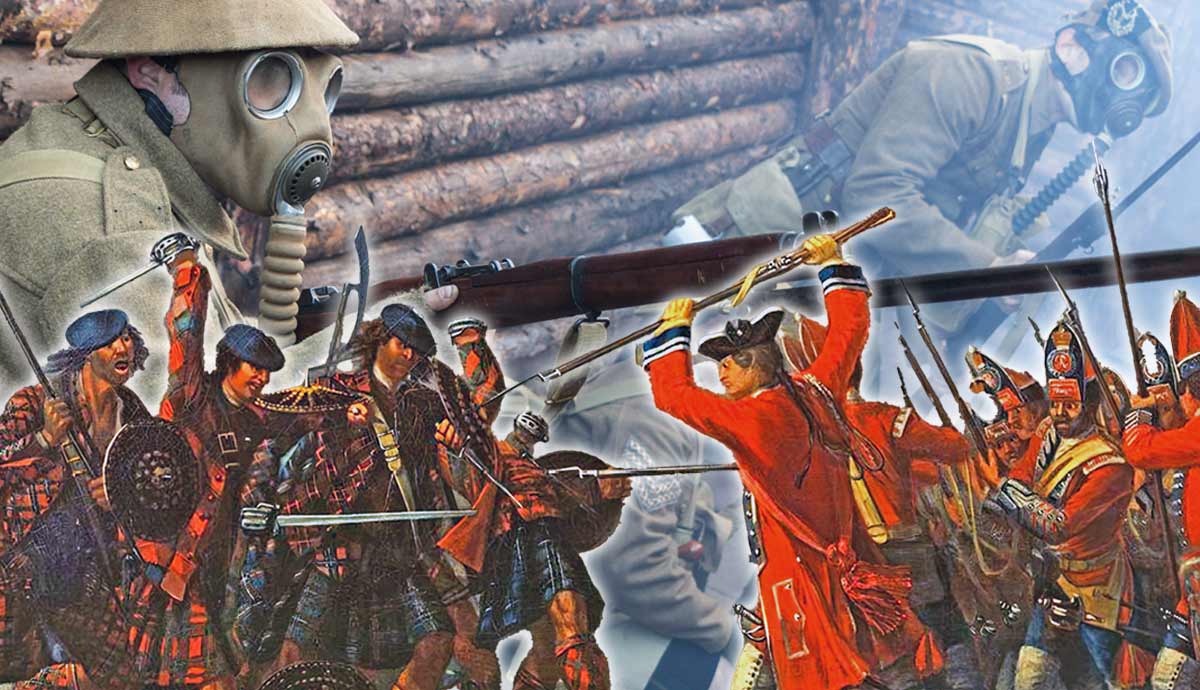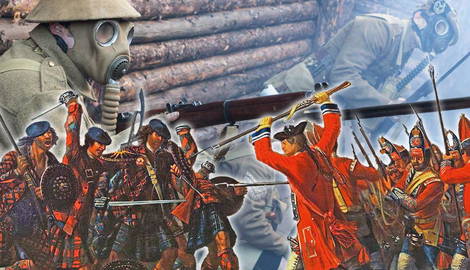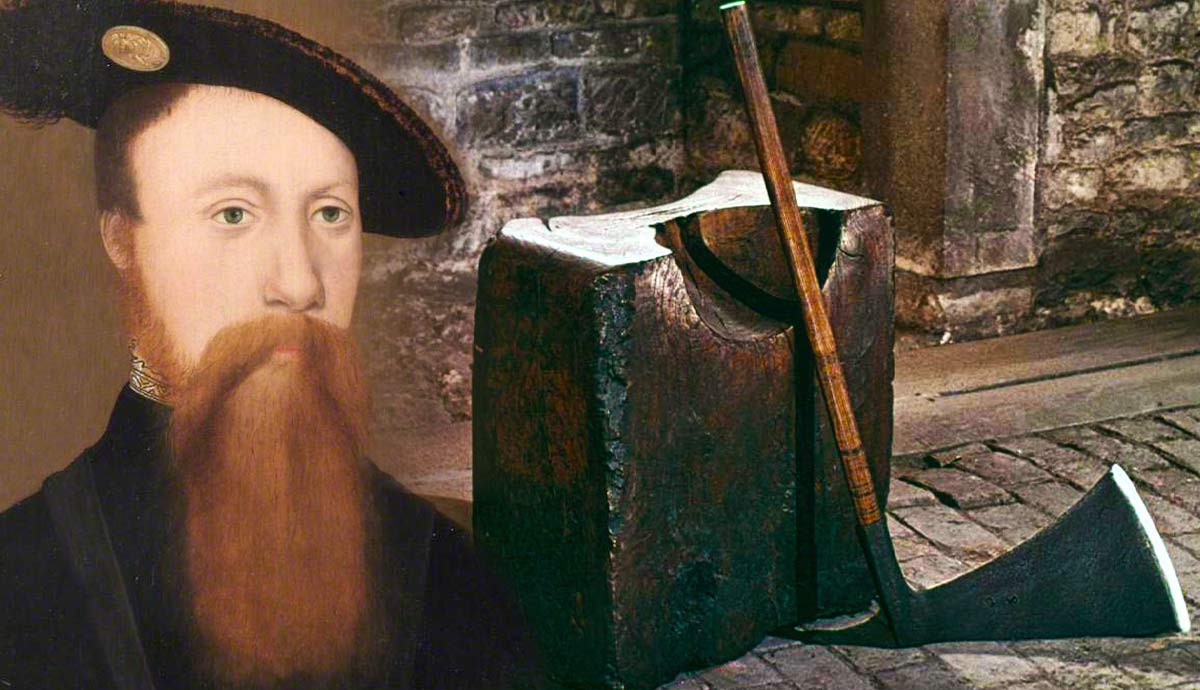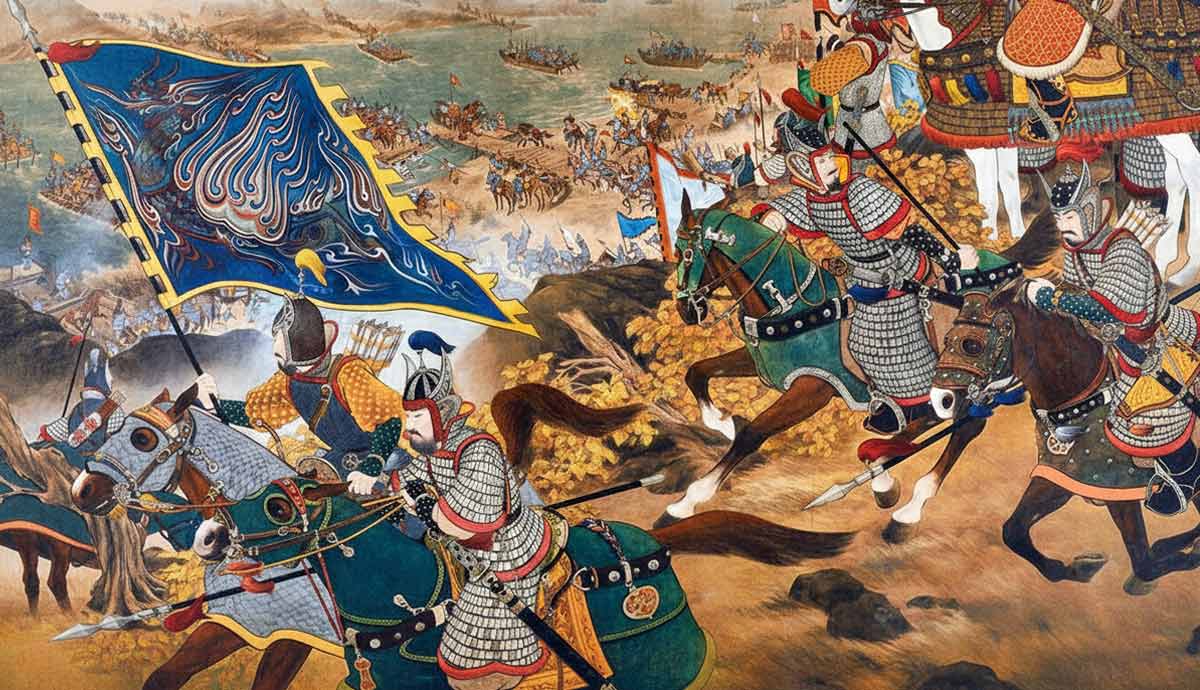
A sharpened stick was probably the first weapon invented by humans. Since then, the spear has been the most important weapon on most battlefields until the widespread introduction of gunpowder and firearms. However, owing to the limitations of early firearms technology, it would be centuries before armies could do away with “pointy sticks” altogether. Ranged infantry remained vulnerable against cavalry or melee infantry at close quarters. The solution was to make early firearms capable of becoming the trusty “pointy stick” at a moment’s notice. Thus, the bayonet was invented!
The Era of Pike and Shot

Although the introduction of firearms radically changed the nature of warfare, the pace of transformation was slower than one might expect. The earliest firearms were inaccurate, temperamental, and slow to reload. Moreover, troops armed with muskets and arquebuses were extremely vulnerable in hand-to-hand fighting. They typically lacked armor and had only the clubbed stock of their firearms or cheap melee weapons to fend off attackers in close combat. Thus, musketeers and harquebusiers were dependent on supporting melee infantry to protect them if the enemy got too close.
Between the late 15th and mid-17th centuries, the pike and shot formation was the prevailing way of European warfare. Formations consisted of a mixture of firearm-bearing troops and pikemen, often with the addition of various other melee-armed soldiers who might carry halberds, zweihanders, or swords and bucklers. Soldiers equipped with muskets or other firearms provided ranged offense whereas the pikemen could deal with other infantry and protect the musketeers who were especially vulnerable to cavalry charges.
The ratio of pike to shot varied across time, with firearms achieving greater prevalence in later periods. During the late 1400s and throughout much of the following century, pikemen accounted for a greater proportion of the formation and played a decisive offensive role. However, as firearm technology improved, pikemen were increasingly relegated to a defensive role and exchanges of volley fire played a more decisive role in most battles. Naturally, the proportion of pike and shot shifted in preference for the latter over time.
Invention of the Bayonet

The inventor of the bayonet remains a mystery. It is not even known on which continent the invention originated. One of the earliest depictions appears on the Chinese Binglu manuscript dated to 1606. The manuscript contains an illustration of a plug bayonet attached to breech loading rifle. However, there is no further evidence of the use of bayonets in Ming Dynasty China.
A popular origin story is that the bayonet originated from the French town of Bayonne in the mid-17th century – hence the name – although there is no conclusive evidence. Since the bayonet is a relatively simple device, consisting of a bladed weapon affixed to a firearm, it is possible that early versions were improvised by soldiers in need of a melee weapon at various different places independently at roughly the same time.
Whatever the case, the introduction of bayonets to the battlefields of Europe in the mid-1600s would contribute drastically to the shifting composition of the pike and shot formation until it was done away with altogether in favor of linear line formation. With the addition of an attachable bladed weapon to firearms which were becoming increasingly deadly at long range as well, musketeers were no longer so vulnerable in close combat and pikemen became irrelevant.
Plug Bayonets

The “plug” bayonet was the first widespread iteration of the weapon. As historian John Stone explains, it “was designed to be pushed into the muzzle of a musket creating an extemporized spear.” This enabled troops equipped with firearms to engage more confidently in close quarters fighting, negating the need for dedicated melee units. Indeed, many encounters on the battlefield during the 18th and 19th centuries would be decided by daring bayonet charges after exchanges of volley fire.
The conversion of the musket into an improvised spear at moments of need also finally meant that musket-armed infantry were not entirely at the mercy of cavalry in cases where the latter were able to close the distance and engage in hand-to-hand fighting. In the words of Bruce A. Elleman, “With guns and bayonets, foot soldiers could not only compete with cavalry, they could dominate them.”
Development and Design

Plug bayonets varied in design, with the earliest iterations essentially being improvised knives or daggers shoved down the muzzle of the firearm. Standardization appears to have occurred in the mid or late-1600s, at least in parts of Europe. In 1678, French historian Louis de Gaya described the design of French plug bayonets in the Traité des armes, des machines de guerre. According to de Gaya, they were almost as long as a dagger, lacked a guard and grip, and had a wooden shaft that was about eight or nine inches long with a blade that was one inch wide. By the 1680s, plug bayonets were designed with a tapered handle that terminated in a spherical section to prevent the bayonet from falling down the muzzle of the musket. The addition of crossguards also became more common.
Disadvantages of the Plug Bayonet

The plug bayonet had a major drawback: because the bayonet was pushed into the muzzle, it prevented the user from firing or reloading. This meant that soldiers could not quickly alternate between the ranged and close combat modalities their weapons were capable of.
This could have dire tactical consequences as the Scottish Royalists found out at the Battle of Killiecrankie in 1689. When the Jacobite forces charged the Royalist lines, the latter had delayed fixing their bayonets in the hope that they could fire more volleys. This delay cost them dearly as the Highlanders succeeded in rushing their position before they could fix bayonets. The Highlanders, who were armed with swords, axes, and targes decimated the Royalists and won the battle despite being outnumbered.
Socket Bayonets

As explained by historian Bill Harriman, “The inability to discharge a firearm with a plug bayonet inserted in its muzzle soon led to the search for a design that would not only alleviate this basic deficiency but which would also allow the soldier to use his rammer without injuring his hand while loading.” The solution was the socket bayonet “which slipped over the barrel to keep the bore clear for firing and loading while the bayonet was fixed. The blade was attached to a short, curved bar which put it well to the side of the barrel, allowing the soldier to use his rammer without fear of piercing his hand on the point.”

Owing to its inherent advantages, the socket variety was the bayonet of choice in European armies for about two centuries. Soldiers no longer had to fumble fixing their bayonets at the last minute to repel an enemy charge. Indeed, at the Battle of Culloden in 1746, the British Army – armed with muskets and socket bayonets – successfully repelled the charging Jacobite Highlanders. According to former soldier and military historian Stuart Reid, the British developed a doctrine for defeating the Highland charge whereby each soldier would thrust his bayonet at the adversary to his right, thus bypassing the targe which would otherwise have shielded the Highlander.
Other Types of Bayonet

Socket bayonets tended to be of the “spike” variety, meaning that the weapon had no sharp edges to cut with and was used exclusively for thrusting like a spear or short pike. However, knife and sword bayonets were also developed and became especially popular in Prussia and France during the 19th century. Generally, the advantage of knife and sword bayonets was that they could prove useful as weapons and tools when not attached to a musket or rifle. Some contemporary bayonets still in use with modern militaries have additional functions integrated into their designs, such as wire cutters or small saws, often attached to the bayonet’s scabbard.
Decline in Use

As modern warfare evolved and technology became more advanced, the outcomes of battles were increasingly determined by the ability to overwhelm the enemy by generating tremendous amounts of firepower. The wide scale replacement of muskets with rifles enabled soldiers to deliver more accurate fire at longer distances, thus rendering bayonet charges riskier. This trend was compounded further with the development of long-range artillery, magazine-fed small arms, and machine guns which made ranged combat deadlier still.
Statistics cited by John Stone illustrate the diminishing importance of bayonets in combat. Between 1800 and 1850, bayonets and sabers were responsible for between 15 percent and 20 percent of casualties. However, after 1860, these same weapons accounted for only between six and eight percent of casualties. In the First World War, just 0.1 percent of the US expeditionary force personnel admitted to hospital sustained wounds caused by bayonets.
Contemporary Usage

Despite the decline in the use and utility of bayonets, they were not done away with altogether. The trench warfare of the First World War did sometimes necessitate hand-to-hand fighting, although some soldiers preferred smaller improvised weapons like sharpened shovels, knives, daggers, and clubs which were easier to handle in the confined spaces of a trench. Still, the First World War-era manual, read: “The bayonet is the weapon for hand-to-hand fighting, and its use, or the threat of it, finally drives the enemy from his position or causes him to surrender.”
Later instances of bayonet fighting were recorded during the Second World War from 1939 to 1945, the Korean War from 1950 to 1953, and the Falklands War in 1982 during the Battle of Mount Tumbledown. One of the most recent recorded occurrences took place in 2004 during a confrontation between British troops and the Mahdi Army in Iraq when the British used bayonets to engage the enemy at close range. However, the use of bayonets in modern warfare remains incredibly rare.
Despite the diminishing importance of the bayonet on the modern battlefield, many regiments across the world still march with bayonets fixed to their rifles during ceremonial events. As such, the bayonet remains a symbol of the valor and courage of the common soldier, and in particularly dire situations, the contemporary soldier may still put his or her faith in the “pointy stick” as a last resort when all other arms have failed.










